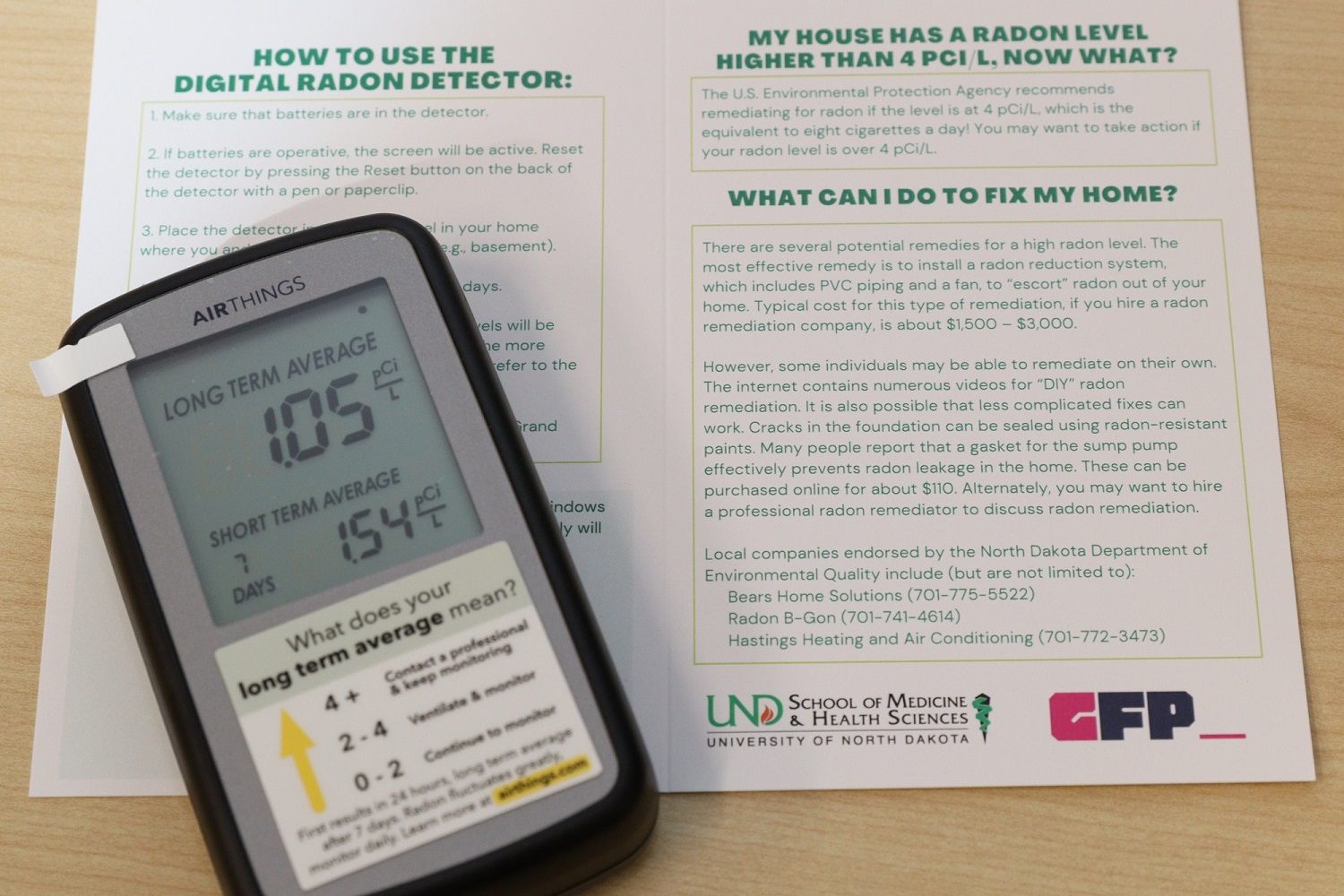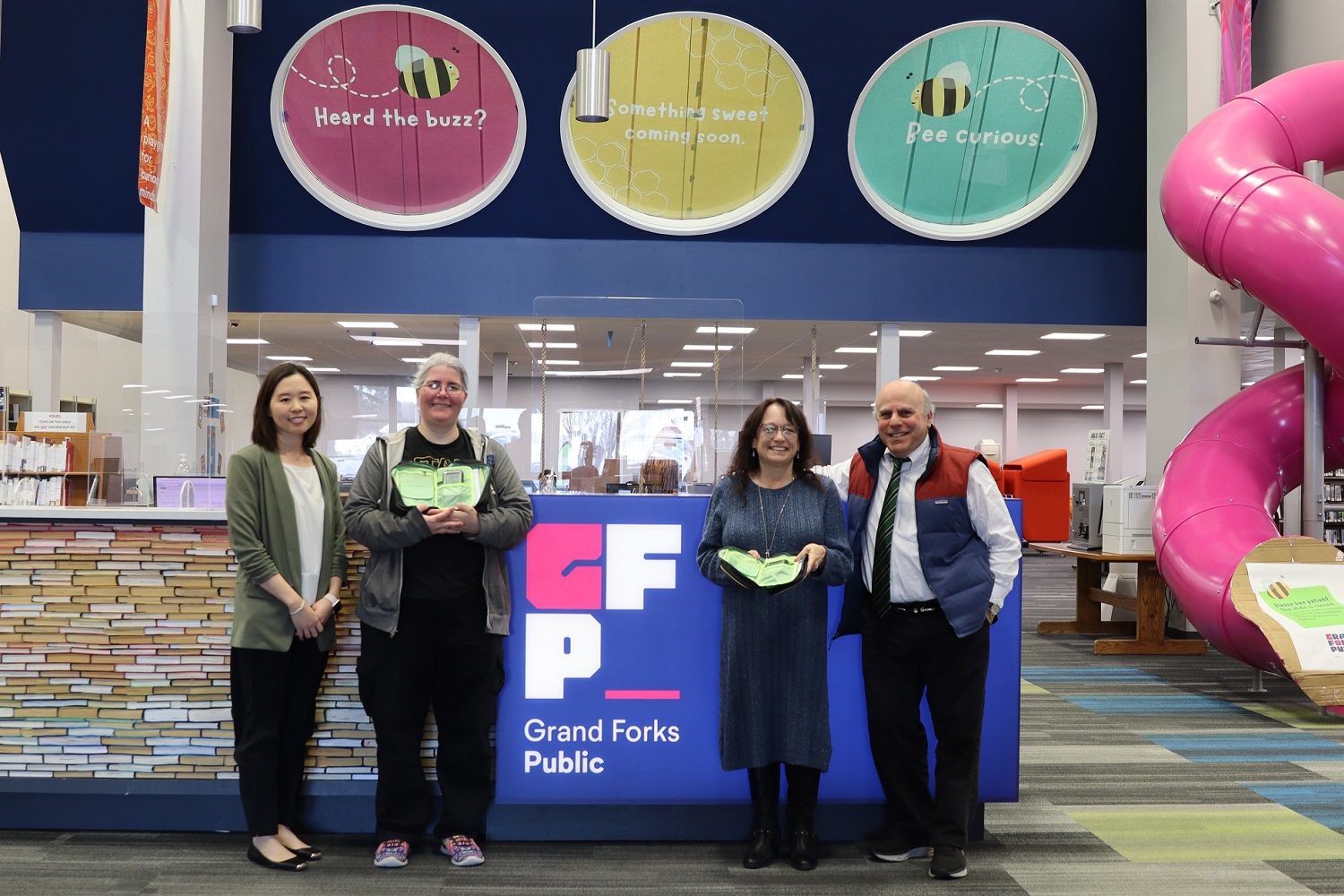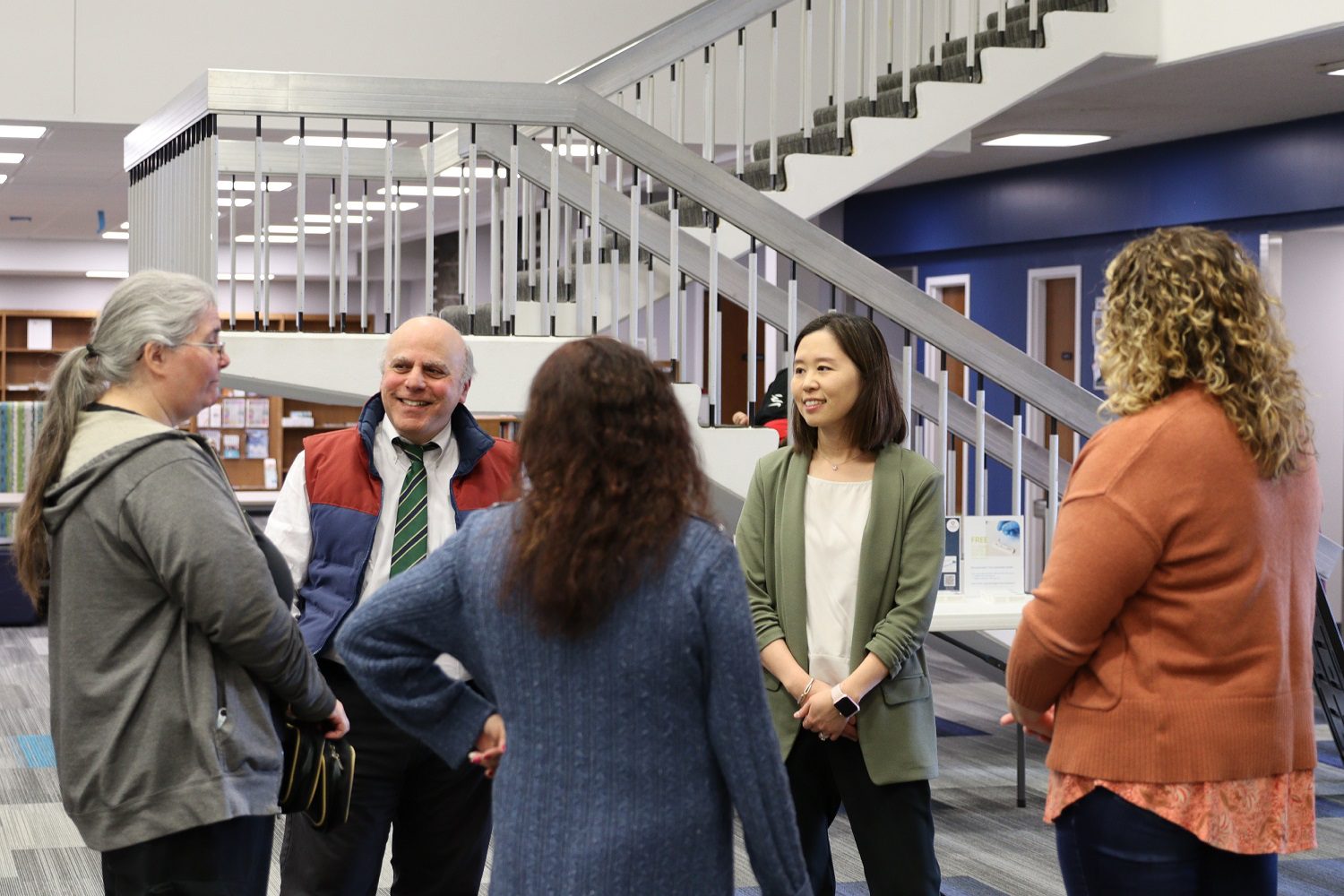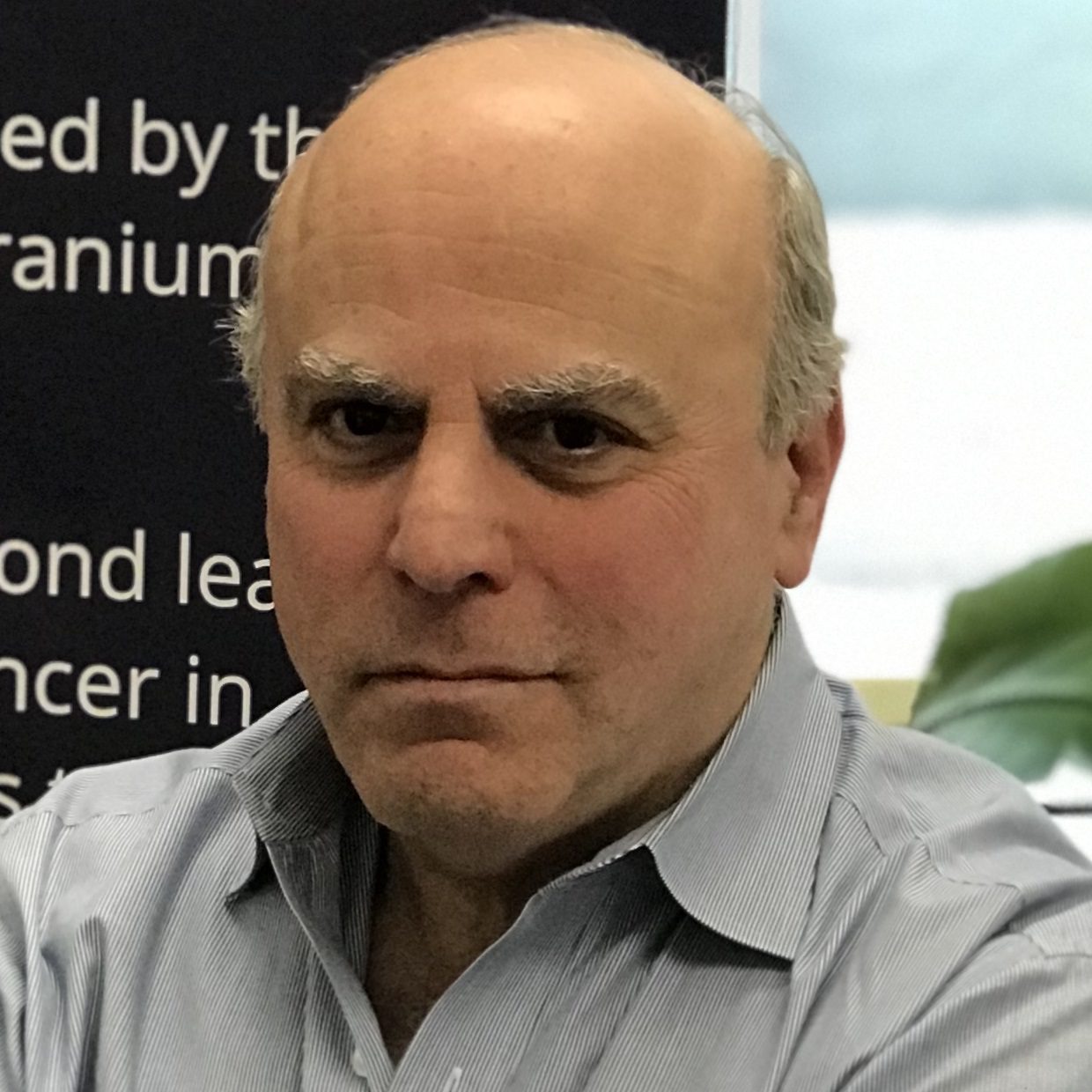UND’s Radon Outreach and Research Brings Free Testing to the Public Library
by Dr. Soojung Kim, Mary Labuhn, and Dr. Gary Schwartz
The Radon Outreach and Research (ROAR) project, led by Dr. Gary Schwartz at the University of North Dakota School of Medicine and Health Sciences in Grand Forks, aims to improve health by informing the public of radon risks, providing access to radon detection resources, and conducting innovative radon research.

The ROAR project not only provides high-quality radon testing equipment but also helpful, concise information for consumers.
Grand Forks is disproportionately impacted by radon as it exhibits some of the highest residential radon levels in the U.S. Per testing arranged by the EPA and the state of North Dakota, the mean radon level in homes in Grand Forks, is nine times the average in homes in the U.S. (1.3 pCi/L) and three times the EPA action level for radon remediation (4 pCi/L). Ten percent (10%) of homes in Grand Forks have radon levels > 20 pCi/L, a value equivalent to more than 1,000 additional chest x-rays per year. Grand Forks is not exceptional in this regard, as every one of North Dakota’s 53 counties has an average radon value greater than 4 pCi/L. As the second leading cause of lung cancer after smoking and accounting for 21,000 deaths nationally, there is a great need for North Dakotans to test their houses for radon and, if warranted, remediate them. This issue is particular acute considering that North Dakota has no laws requiring radon disclosure at the time of home sales.
In theory, distributing free short-term radon test kits might appear to be a good solution for radon testing in homes. However, we learned from clinical trials that we conducted in 2022 and 2023 that these single-use tests, which need to be placed in the home for 48 to 72 hours and then mailed to the laboratory, were rarely used. Clearly, tests that are distributed but not used are a waste of money and opportunity.
The advent of digital radon detectors, which provide a result in a matter of hours and are reusable, make the process of radon testing much quicker and more convenient. Radon detector lending programs, in which individuals borrow digital detectors, have been employed in Canadian libraries, where they have been found to be extremely popular.
Thanks to the National Center for Healthy Housing, the University of North Dakota and the Grand Forks Public Library teamed up to create a digital radon detector lending program. Each detector includes information on what readings from the test measurement mean and what can be done to remediate an identified problem with radon in the home, such as sealing cracks in the floor and foundation or covering openings for sump pumps. Anyone with a library card can check out one of 40 radon detectors, just like a book or CD. Since the library began allowing its patrons to borrow digital radon detectors in March 2023, they have been checked out over 500 times.
Our long-term goal is to extend the program to other public libraries across the state.
Supplemental Gallery
Photographs by Joonghwa Lee, Associate Professor of Communication at the University of North Dakota.

Monitors, cases, and education: The Grand Forks Public Library has many kits available for its patrons to borrow.

Heard the buzz? The Grand Forks Public Library is loaning radon monitors to local consumers. From left to right: Dr. Soojung Kim, UND Department of CommunicationTonya Palmer, Information Services Supervisor, Grand Forks Public Library;Wendy Wendt, Director, Grand Forks Public Library; and Dr. Gary Schwartz, UND School of Medicine.

Launching the initiative are, from left to right, Tonya Palmer, Information Services Supervisor, Grand Forks Public Library; Dr. Gary Schwartz, UND School of Medicine; Wendy Wendt, Director, Grand Forks Public Library; Dr. Soojung Kim, UND Department of Communication; and Angie Laxdal, Marketing Director, Grand Forks Public Library.
 Soojung Kim, PhD, MPH, is an associate professor and chair in the Department of Communication at the University of North Dakota. She received both MA and PhD degrees in mass communication from the University of Minnesota, an MPH from the University of North Dakota, and a BA in mass communication and psychology from Korea University. Her research focuses on increasing the awareness of public health issues and changing health behaviors by using effective social and mobile media strategies. Her research has been supported by the National Institute of General Medical Sciences of the National Institutes Health, Prevent Cancer Foundation, NCHH, and Grand Forks Public Health.
Soojung Kim, PhD, MPH, is an associate professor and chair in the Department of Communication at the University of North Dakota. She received both MA and PhD degrees in mass communication from the University of Minnesota, an MPH from the University of North Dakota, and a BA in mass communication and psychology from Korea University. Her research focuses on increasing the awareness of public health issues and changing health behaviors by using effective social and mobile media strategies. Her research has been supported by the National Institute of General Medical Sciences of the National Institutes Health, Prevent Cancer Foundation, NCHH, and Grand Forks Public Health.
 Mary Labuhn is graduate research assistant for the ROAR project and the Department of Communication. She is currently a master’s in public health student at UND’s School of Medicine.
Mary Labuhn is graduate research assistant for the ROAR project and the Department of Communication. She is currently a master’s in public health student at UND’s School of Medicine.
 Gary G. Schwartz, PhD, MPH, lead for the Radon Outreach and Research (ROAR) program, is a professor and chair of the Department of Population Health at the University of North Dakota School of Medicine and Health Sciences. Dr. Schwartz earned his PhD in neuroscience from the State University of New York and an MPH and PhD in epidemiology from the University of North Carolina at Chapel Hill. His research focuses on radiation and cancer.
Gary G. Schwartz, PhD, MPH, lead for the Radon Outreach and Research (ROAR) program, is a professor and chair of the Department of Population Health at the University of North Dakota School of Medicine and Health Sciences. Dr. Schwartz earned his PhD in neuroscience from the State University of New York and an MPH and PhD in epidemiology from the University of North Carolina at Chapel Hill. His research focuses on radiation and cancer.
